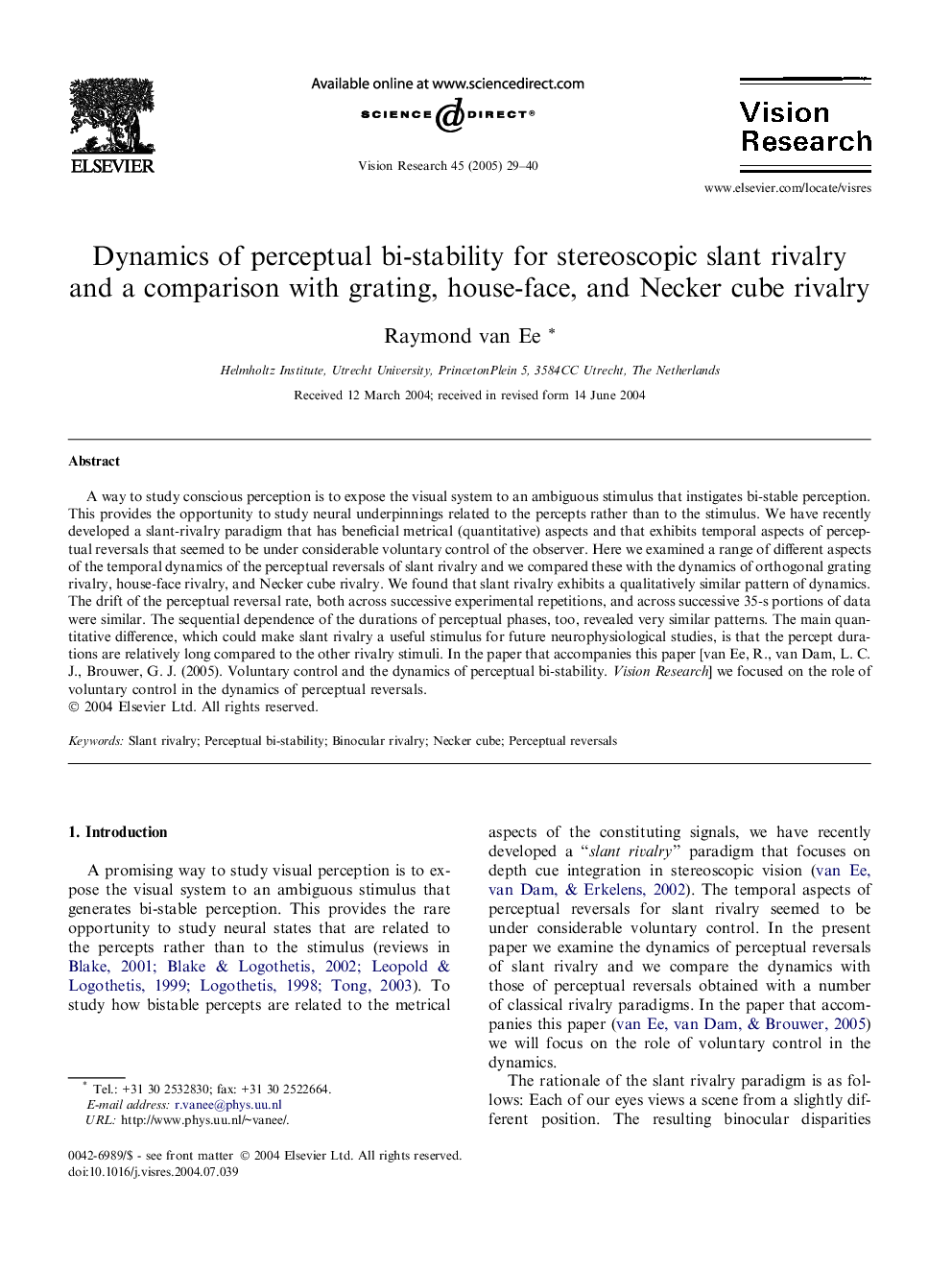| Article ID | Journal | Published Year | Pages | File Type |
|---|---|---|---|---|
| 9348599 | Vision Research | 2005 | 12 Pages |
Abstract
A way to study conscious perception is to expose the visual system to an ambiguous stimulus that instigates bi-stable perception. This provides the opportunity to study neural underpinnings related to the percepts rather than to the stimulus. We have recently developed a slant-rivalry paradigm that has beneficial metrical (quantitative) aspects and that exhibits temporal aspects of perceptual reversals that seemed to be under considerable voluntary control of the observer. Here we examined a range of different aspects of the temporal dynamics of the perceptual reversals of slant rivalry and we compared these with the dynamics of orthogonal grating rivalry, house-face rivalry, and Necker cube rivalry. We found that slant rivalry exhibits a qualitatively similar pattern of dynamics. The drift of the perceptual reversal rate, both across successive experimental repetitions, and across successive 35-s portions of data were similar. The sequential dependence of the durations of perceptual phases, too, revealed very similar patterns. The main quantitative difference, which could make slant rivalry a useful stimulus for future neurophysiological studies, is that the percept durations are relatively long compared to the other rivalry stimuli. In the paper that accompanies this paper [van Ee, R., van Dam, L. C. J., Brouwer, G. J. (2005). Voluntary control and the dynamics of perceptual bi-stability. Vision Research,doi:10.1016/j.visres.2004.07.030] we focused on the role of voluntary control in the dynamics of perceptual reversals.
Related Topics
Life Sciences
Neuroscience
Sensory Systems
Authors
Raymond van Ee,
